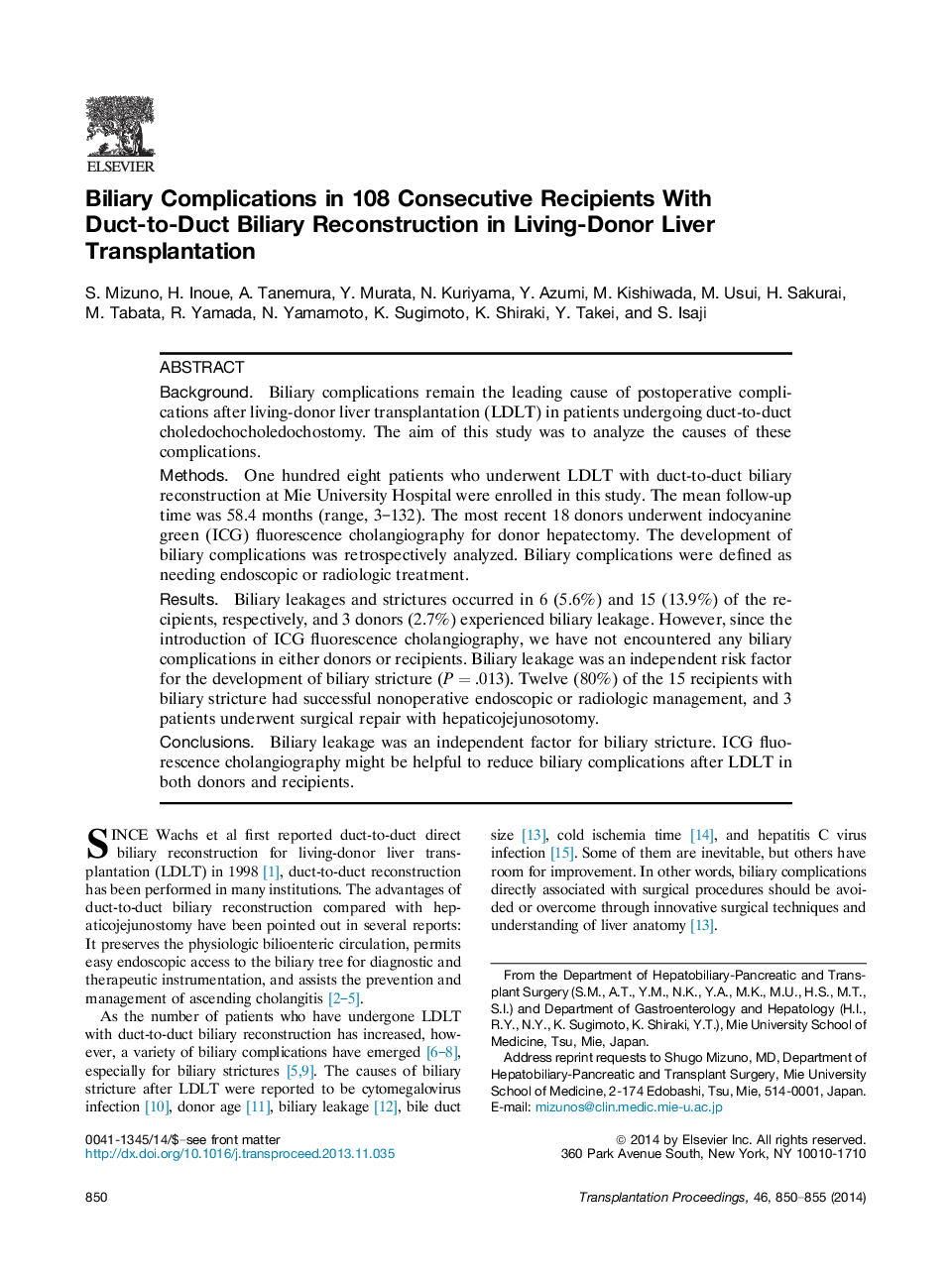| Article ID | Journal | Published Year | Pages | File Type |
|---|---|---|---|---|
| 4258410 | Transplantation Proceedings | 2014 | 6 Pages |
BackgroundBiliary complications remain the leading cause of postoperative complications after living-donor liver transplantation (LDLT) in patients undergoing duct-to-duct choledochocholedochostomy. The aim of this study was to analyze the causes of these complications.MethodsOne hundred eight patients who underwent LDLT with duct-to-duct biliary reconstruction at Mie University Hospital were enrolled in this study. The mean follow-up time was 58.4 months (range, 3–132). The most recent 18 donors underwent indocyanine green (ICG) fluorescence cholangiography for donor hepatectomy. The development of biliary complications was retrospectively analyzed. Biliary complications were defined as needing endoscopic or radiologic treatment.ResultsBiliary leakages and strictures occurred in 6 (5.6%) and 15 (13.9%) of the recipients, respectively, and 3 donors (2.7%) experienced biliary leakage. However, since the introduction of ICG fluorescence cholangiography, we have not encountered any biliary complications in either donors or recipients. Biliary leakage was an independent risk factor for the development of biliary stricture (P = .013). Twelve (80%) of the 15 recipients with biliary stricture had successful nonoperative endoscopic or radiologic management, and 3 patients underwent surgical repair with hepaticojejunosotomy.ConclusionsBiliary leakage was an independent factor for biliary stricture. ICG fluorescence cholangiography might be helpful to reduce biliary complications after LDLT in both donors and recipients.
